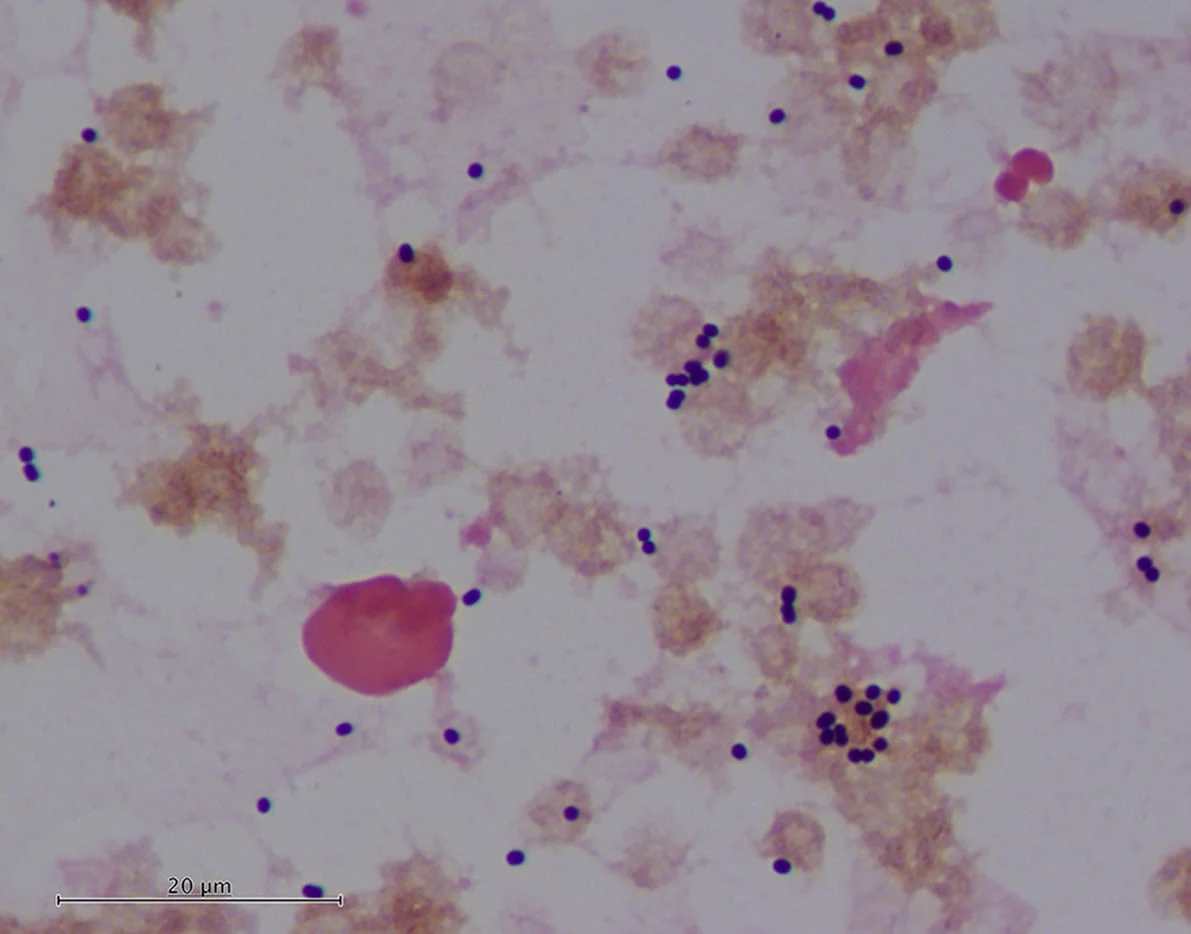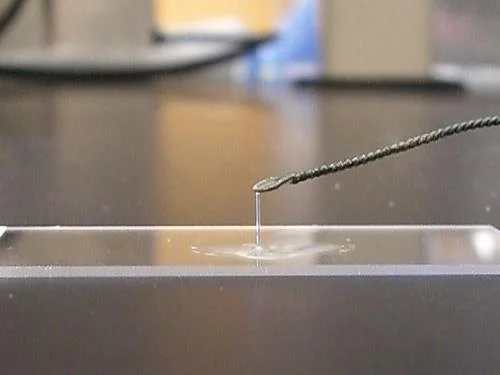Content :
Gram Stain of Acinetobacter
◉ Introduction
During the Gram stain, in the logarithmic (exponential) phase, Acinetobacter appears as small Gram-negative coccobacilli, measuring 1.0-1.5 µm by 1.5-2.5 µm, either singly or in pairs. These bacteria are morphologically similar to Neisseria spp., though they can be easily differentiated by the oxidase test. However, in the stationary phase, Acinetobacter tends to become more coccoid, making it harder to identify. As Acinetobacter is resistant to decolorization, it may be misidentified as Gram-variable or Gram-positive "staph-like" cocci.

Acinetobacter appear as Gram-positive cocci.
◉ Clinical Implications
Although rare, misidentifying Acinetobacter as Gram-positive cocci may result in inappropriate antibiotic treatment, particularly in patients with severe infections. Since Acinetobacter is often resistant to multiple antibiotics, a failure to correctly identify the organism based on Gram stain alone could have serious consequences, delaying the appropriate therapy.
◉ Differentiation Tips for Acinetobacter
Biochemical Differentiation by TSI Agar
Acinetobacter does not ferment glucose and is strictly aerobic, so it will not change the color of the TSI medium. This distinguishes it from, for example, Staphylococcus, which ferments glucose and causes an acid reaction in the medium.
Exponential Phase Stimulation
To enhance the visibility of bacterial coloration, it is recommended to incubate colonies in a nutrient broth and place them in a water bath for 30 minutes to 1 hour. This allows for a clearer assessment of the bacterial characteristics during the active phase of growth.
Potassium Hydroxide (KOH) String Test
The KOH test is a confirmatory method for identifying Gram-negative organisms. The addition of 3% KOH to a bacterial suspension breaks down the Gram-negative cell walls, releasing DNA. This process results in a viscous, mucoid suspension that forms stringy strands within 30 seconds, confirming the presence of Gram-negative bacteria.
Steps for the KOH String Test:
- Place a drop of 3% KOH on a microscope slide.
- Add a generous amount of 24-48 hour cultured bacteria to the KOH drop and mix thoroughly.
- If the bacteria are Gram-negative, the solution will become viscous and form mucoid chains within 30 seconds.

KOH test